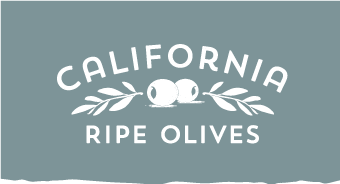The information on this page has been compiled and edited from previously published articles, by Dr. Connie Guttersen. The articles are not intended as health advice, nor do they necessarily reflect the views and opinions of the California Olive Committee. Always consult your physician on matters of health and wellness.
by Connie Guttersen, RD PhD.
There is a lot more to eating for competitive sports than just focusing on a quick fix of energy bars, sports drinks, or even carbohydrate loading the night before. Peak performance in teens is all about balancing the right foods into an appropriate training program and healthy lifestyle.
Like adults, teen athletes need adequate nutrition to maintain health and optimize performance. Unlike adults, their nutrition needs must provide for physical growth and development. Children and teens use more energy per kilogram of body weight than do adults (Nelson—Steen, 1986). Therefore adult based tables for estimating energy expenditure in any given sport may underestimate the actual caloric needs (Bar—Or 1983). Depending on how active, teen athletes may need anywhere from 2000 to 5000 total calories per day to meet their energy needs. Teen athletes, who do not take in enough calories, compromise their ability to perform at their best and may not be able to maintain a healthy body weight. Extreme calorie restriction could eventually lead to an increased risk of growth problems and other serious issues (Bar—Or 1983). This concern typically arises in sports where weight is emphasized such as wrestling, swimming, dance or gymnastics.
Currently there is no research available suggesting that healthy active teens need significantly different proportions of energy from carbohydrates, protein, and fat than those proposed in the 2002 Institute of Medicine (IOM) report from the Food and Nutrition Board on Dietary Reference Intakes. This information is summarized in the table below.
Planning A Teen's Diet.
There are some important points to consider in planning the teen’s diet. First, eat a wide a variety of foods rather than just focusing on one food group, ie carbohydrates. The mix of fuel (protein, carbohydrate, fat) burned during exercise primarily depends on the intensity and duration of the exercise performed, one’s level of fitness, and the individual’s nutritional status. Eliminating one or more food group may affect nutritional status. As exercise intensity increases, the use for carbohydrate as energy will also increase. (Hebestreit et al, 1996) If blood glucose can not be maintained and/or stores of glycogen become depleted, the ability to perform exercise will be compromised. Fat can also be used as alternate fuel in combination with lesser amounts of glucose when the intensity is at a moderate level and for longer periods of time. This can be worded in an understanding that “fat burns in the flame of carbohydrate.” Meaning, once the carbohydrate stores in the body are depleted, it becomes almost impossible for the body to continue the exercise solely on fat as fuel. The end result is an exhausted athlete. Protein can also be used for energy at rest and during exercise, however, in well fed individuals, it provides less than 5% of the energy expended. (Melby et al, 1998)
Choosing whole grains can provide a competitive edge for athletic teens. In addition to the energy source of carbohydrates, key nutrients such as fiber, selenium, folic acid, vitamin E, and B vitamins boost the nutrient density of the meal. Sugary carbohydrates, such as those found in many snack energy bars or beverages, may provide a quick burst of energy at the beginning, but often lead to a drop in energy levels very quickly.
To cover the needs of growth and development, the daily protein requirement per unit body weight are higher in teens than for adults, but it is unclear whether child and teen athletes need more protein than their inactive counterparts (National Research Council, 1989). However, exercise increases the need for protein to repair exercise-induced damage to muscle fibers, supports the gains of muscle mass which occur as a result of training, and provides an energy source during the activity (Tipton & Wolfe, 2004) . Teen athletes typically get a sufficient amount of protein through the regular diet and do not require high protein shakes or supplements. Excessive intakes of dietary protein can actually increase the risk of dehydration, calcium loss, and even kidney problems (Lemon, 2000). Special attention must be given to athletes who restrict caloric intake to maintain or lose body weight. Such athletes may incur a loss of body protein and lean mass, which may compromise their health and sports performance (Roemmich et al, 1991). A protein rich diet would include a wide variety of plant sources of protein from beans, soy, nuts, and legumes with animal sources from lean meats, eggs, and dairy.
Active muscles quickly burn through carbohydrates and thereby require longer lasting energy. The IOM recommendations suggest that diets should be low in saturated and trans fats, while providing adequate amounts of essential fatty acids (linoleic and linolenic acid) (Institute of Medicine, 2002). A wide diverse diet would include a wide variety of dietary sources of unsaturated fats including nuts, seeds, olives, and plant oils. Fat provides energy and essential elements for cell membranes and is associated with the intakes of the fat soluble vitamins E, A, and D. Low fat intakes (15 - 17% of energy) are generally not recommended for active individuals and do not appear to offer any health benefits when compared to a more moderate fat intake (Horvath et al. 2000)
Eating a balanced diet will also provide other vitamins and minerals which will help the body in energy metabolism, building and repair of muscle tissue, protection from oxidative damage to tissues, and adequate immune function. (Manore & Thompson, 2000). Most teens do not get enough of two important minerals: calcium and iron; more importantly, their needs for these two nutrients may be even higher than those of other non-exercising teens. Calcium helps build strong bones that athletes depend on. Calcium from dairy and some greens such as in spinach and broccoli is critical for protecting against stress fractures. Iron, is another important mineral which carries oxygen to the muscles. Iron is obtained in the diet from lean meats, green leafy vegetables, and iron fortified cereals. Those individuals who restrict their caloric intake or use severe weight loss practices are the ones at greatest risk of poor micronutrients status.
Due to the higher energy cost of exercise, children produce more metabolic heat per unity body mass than do adults (Bar-Or, 1989). Evaporation of sweat is the main avenue for dissipating the heat, particularly in hot climates. Replacement of the fluid and electrolytes is critical to prevent dehydration. The main strategy is to enhance thirst and educate athletes, coaches, and parents to drink frequently, even when thirst is not present. Children and teens are more apt to drink if the fluids are palatable and chilled. (Wilk & Bar-Or, 1996). A good rule of thumb is to strive to hydrate before exercise, throughout the activity, and re-hydrate once the activity is finished (American College of Sports Medicine, 1996). Approximately 2 hours before a practice or game, 6 - 18 oz water can be consumed. During exercise, active teens can drink approximately 4 - 8 oz water. If the duration is longer than one hour or the activity is in a hot climate, a sport drink containing carbohydrate and sodium can be used. Review the nutrition labels so that these drinks do not contain caffeine or excessive amounts of sugar (less than 100 calories per 8 ounce serving) but do contain some electrolytes such as sodium and potassium. Signs and symptoms of dehydration during exercise include muscle cramping, feeling lightheaded, nausea, headache and faint.
Most of the research on sports nutrition has been done on adults. While many of the physiological responses of children and teens to exercise are similar to adults, there are some differences that may have implications for the young athlete’s nutritional requirements. Coaches, parents, team physicians and athletes should be sensitive to protein requirements, daily energy intake, and means of enhancing fluid intake during exercise to prevent exercise-induced dehydration, particularly in hot climates. Keeping a weekly regimen of nutrient rich foods ensure that Thursday’s meal — “game meal” can be a motivating factor to ensure awareness among athletes that what they eat can make a difference.
REFERENCES:
- Nelson-Steen, S. (1996). Nutrition for the school-aged child athlete. In: O. Bar-Or (ed.) The Child and Adolescent Athlete. Oxford, England: Blackwell Scientific, pp. 260-273.
- Bar-Or, O. (1983). Pediatric Sports Medicine for the Practitioner. From Physiological Principles to Clinical Applications. Berlin: Springer-Verlag.
- Hebestreit, H., F. Meyer, Htay-Htay, G.J.F. Heigenhauser, and O. Bar-Or (1996). Plasma metabolites, volume and electrolytes following 30-s high-intensity exercise in boys and men. Eur. J. Appl. Physiol. 72: 563-569
- Melby, C.L., S.R. Commerford, and J.O. Hill (1998). Exercise, macronutrient balance, and weight control. In: D.R. Lamb and R. Murray R (eds.) Perspectives in Exercise Science and Sports Medicine, Vol. 11, Exercise, Nutrition and Weight Control. Carmel, IN: Cooper Publishing Group,
pp. 1-60. - National Research Council (1989). Recommended Dietary Allowances, 10th ed. Washington, D.C.: National Academy Press.
- Tipton Kd, Wolfe RR. Protein and amino acids for athletes. J Sports Sci. 2004;22:65-79.
- Lemon PWR. Beyond the Aone: Protein needs of active individuals. J Am Coll Nutr. 2000;19(5):513S-521S.
- Roemmich, J.N., W.E. Sinning, and C.A. Horswill (1991). Seasonal changes in anaerobic power, strength and body composition of adolescent wrestlers. Med. Sci. Sports Exerc. (abstract). 23: S29.
- Institute of Medicine ( IOM). Dietary Reference intakes. Washington, DC: National Academy of Press, 2002
- Horvath PJ et al. The effects of varying dietary fat on the nutrient intake of male and female runners. J Am Coll Nutr. 2000;19(1) 42-51.
- Manore MM, Thompson JL. Sport nutrition for health and performance. Champaign, IL: Human Kinetics Publisher, 2000.
- Wilk, B., and O. Bar-Or (1996). Effect of drink flavor and NaCl on voluntary drinking and rehydration in boys exercising in the heat. J. Appl. Physiol. 80: 1112-1117.


